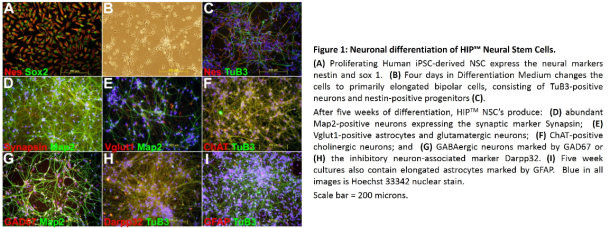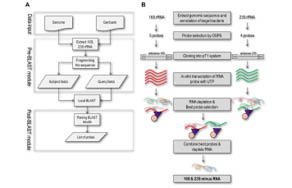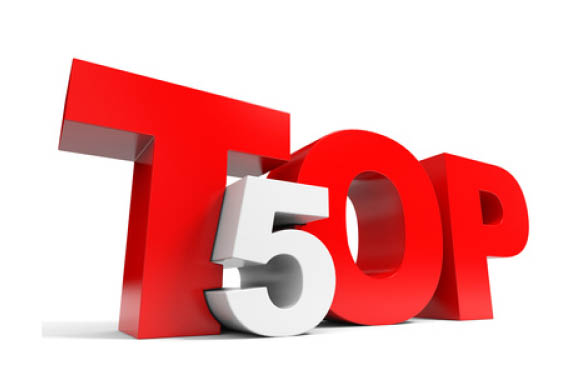The study of neurodegenerative diseases has produced a number of interesting lead compounds but very few that become approved drugs. Over the years High Throughput Screening (HTS) has been used to discover new information on cellular processes in normal and diseased states. Rodent neurons are widely used in these neuronal screening assays but if human cells could be used they would provide an improved model system to study disease biology and be more clinically relevant. Human Induced Pluripotent Stem Cells are becoming a promising option for researchers creating in vitro models for the study of neurodegenerative diseases.

oligodendrocytes.
The interest in Induced Pluripotent Stem Cells (iPSC) has intensified over the years and proves to be promising in its ability to impact human health. [1] The field is exploding with new methods for generating iPS cells and there are still questions about their performance in vitro compared to rodent neurons.
What are the advantages to using iPSC cells vs. rodent neurons?
What are the advantages to using iPSC cells vs. rodent neurons?Can these neurons derived from iPSC cells differentiate and function in vitro in the same ways that rodent neurons do? Can they be used in a HTS system to improve the success rate of drug discovery? A novel system for differentiating iPSC to neurons was created by scientists at GlobalStem Inc. demonstrating that iPSC derived neuronal progenitor cells could be differentiated into functional, mature neurons. Using Human iPS -derived Neural Stem Cells (HIP™ NSC, Cat# GSC-4301) they showed that these cells are capable of being expanded providing a continuous supply of neurons and eliminating the process of deriving rodent neurons. Having the ability to expand human cells capable of differentiating into neurons provides us with new ways to study neurodegenerative diseases in a human context helping to improve the validity of drug screening data.
Once these cells have been expanded the big question is can they be differentiated into functional neurons?
When grown in GlobalStem’s PluriQ™ Human Cell Conditioned Medium (Cat# GSM-9200) on a special substrate, we were able to induce differentiation of HIP™ NSC’s to produce cells containing neuron-like morphology. Once induced the cells were then passaged and plated into differentiation media NeuralQ™ (Cat# GSM-9420) and GS21 Neural Supplement (Cat# GSM-3100) onto multi-well plates for approximate-ly 5 weeks to confirm functionality.
Characterization assays showed HIP™ iPS-Cell Derived Neurons (Cat# GSC-4312) over time displayed a neuron-like morphology staining positive for MAP-2, VGLUT 1, CHAT and GAD-67 shown in Figure 1.
Figure 2 shows the HIP™ iPS-Cell Derived Neurons developed a spontaneous synchronized calcium flux.
These cells were shown to be functional in Multi-Electrode Array assays in Figure 3 and also show pre-synaptic release and excitability comparable to primary neurons in Figure 4. All supporting the theory that HIP™ NSC’s can be differentiated into functional neurons and used in drug discovery assays to provide an improved model system.
To summarize, iPSC’s can lead to exciting new advances in the neuroscience community.[2] These cells can be continuously expanded and stocked for future use, induced to differentiate into functional mature neurons, and used in drug discovery assays to study a host of neurodegenerative diseases, providing reproducible, clinically relevant data.
1. Methods Enzymol. 2012; 506: 331–360.
2. Science. 2007 Dec 21;318(5858):1917-20. Epub 2007 Nov 20.







